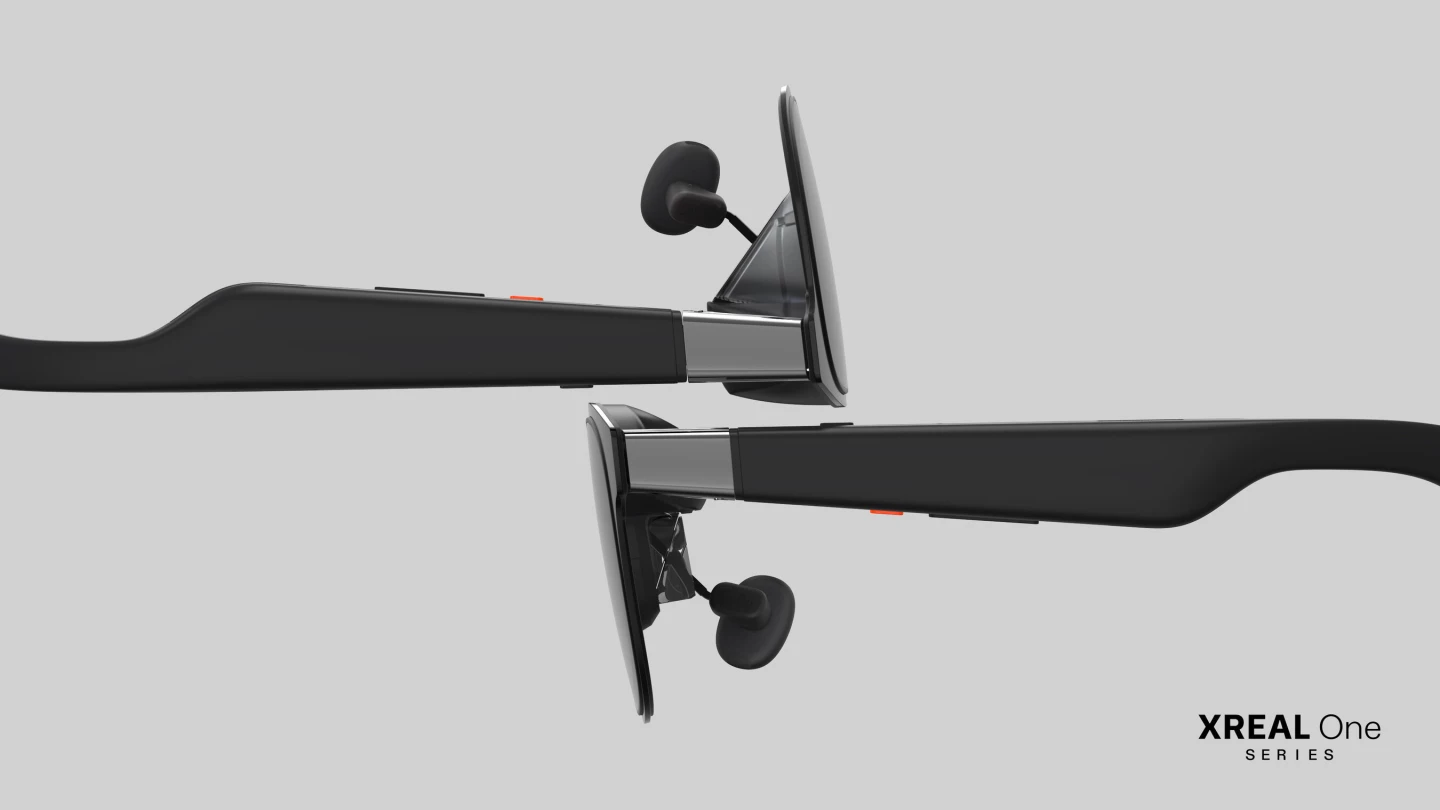Xreal has announced what's described as the "biggest leap forward for the consumer AR industry." The One Series cinematic AR glasses boast in-house spatial computing, audio from Bose, are certified eye-friendly, and can be cabled to "virtually any device."
"The Xreal One Series represents the most advanced consumer AR glasses on the market today," said Chi Xu, CEO and co-founder of Xreal, which rebranded from nReal last year. "With the X1 chip, we're introducing our biggest innovation since pioneering lightweight, portable, tethered AR glasses. X1 is the result of over three years of cutting-edge research and development, culminating in the world's first customized silicon designed specifically for OST [optical see-through] AR glasses.
"This is a transformative moment for Xreal customers – X1 powers the kind of spatial computing we've always envisioned and that customers have been eagerly waiting for. I'm thrilled for everyone to experience the Xreal One Series and see the X1 chip in action. It's a true game-changer."

The new AR glasses sport a new in-house-designed X1 spatial co-processing chip, which combines with a refreshed optical design to offer the wearer a "consistent low-latency 3DoF [three degrees of freedom] spatial screen regardless of source device with a crystal clear picture from edge to edge."
That motion-to-photon latency is reported to be around 3 ms at 120 Hz – which is claimed to be much less laggy than Apple's Vision Pro headset. The visuals are served up on a floating spatial screen or anchored to a fixed point at the press of a button, and other customization options include adjusting virtual screen size and distance, display optimization, color temperature, 2D/3D switching, interpupillary distance (IPD) adjustment, brightness enhancement, and more. An Ultra Wide Mode is available too, which stretches the virtual image to a 32:9 aspect.
The glasses connect to a source device over USB-C for compatibility with just about any device with video-out functionality over USB-C – and that could include an iPhone, Android devices, the Steam Deck, a Windows PC and a MacBook.
With a nod to eye safety, the One Series AR glasses are said to be the first to be granted two new TÜV Rheinland certifications – one for high visibility in strong sunlight and the other for eye comfort. They're also certified flicker free and for low blue light .

The new series is actually made up of two models at launch, the Xreal One and the Xreal One Pro – each offering 1080p per-eye visuals. The former employs a traditional "triangular birdbath lens" for a 50-degree field of view, while the latter makes use of a newly designed flat-prism lens – "an 11mm thin plane that's 40.9% thinner than traditional birdbath optics" that increases the field of view to 57 degrees. The One boasts peak brightness of 600 nits, but the Pro boosts that to 700 nits. Either way, electrochromic dimming can darken or lighten the lenses at the touch of a button.
The One Series models each feature a sturdy and slim magnesium-alloy frame with interchangeable front shells for personalization. The design includes a four-microphone array with near-field and far-field recording capabilities, while the built-in speakers have been "meticulously fine-tuned" by Bose for "optimal audio quality for the wearer."
The One comes in one size and sports software-based IPD adjustment, whereas the Pro is available in two sizes covering 57-to-66-mm or 66-to-75-mm IPD ranges. Prescription inserts can be used with both models.

Interestingly, either flavor can be optioned with a modular RGB camera for capturing Full HD video at 60 frames per second or 12-megapixel photos. This Xreal Eye camera will also be treated to AI-enhanced functionality further down the line, including image recognition and voice comms. Additionally, Xreal says that "augmented reality holographic displays" can be overlaid on real-world views when the AR glasses plus the Xreal Eye are used with the company's Beam Pro mobile device.
Folks wanting to wear their cinematic displays will need to stump up US$499 for the Xreal One or $599 for the One Pro. They're available for pre-order now, with shipping of the One expected to start later this month but Pro buyers will have to wait until early next year. You can see and hear some reactions from pre-launch testers in the video below.







